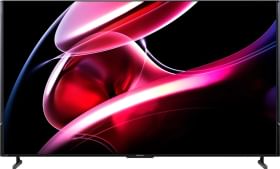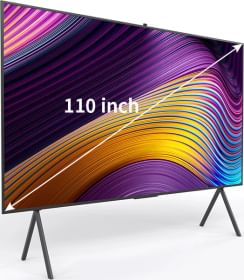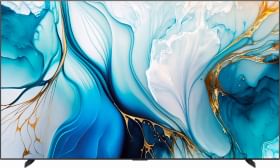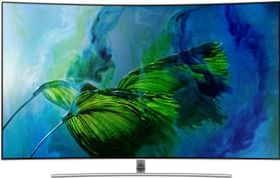MicroLED display is a term that is yet to become mainstream in the display world but have no doubts in your mind – MicroLED Displays are the future. A MicroLED display presents the best of both OLED and Mini LED technology without the risk of causing burn-in. As we approach CES 2024, we will hear a lot more about the MicroLED displays. Apple is already in the news that it might introduce a MicroLED display in its upcoming Apple Watches. Apple in 2014 acquired a company called LuxVue technology which is known for developing power-efficient micro-LED-based displays for consumer electronics.
Earlier today, the MicroLED industry association published roadmap documentation that lays out a timeline for when we get to see MicroLEDs in mobile phones, AR & VR headsets, automotive, TVs, other wearables and more. In this article, we will break down a few points about MicroLED displays to help you understand what makes them Superior to OLEDs and Mini LEDS and why the industry pushing for MicroLEDs.

What exactly is a MicroLED display?
MicroLED also referred as mLED or µLED is looked as the next big dovelopment in display technology after OLEDs. Unlike OLEDs which have limited lifespan due to use of organic matterals, the MicroLED uses inorgranic materal to develop which promises impressive visual fidelity and life span compared to anything that we have seen so far.
Imagine a screen made up of millions of tiny light bulbs, each no larger than a grain of sand. These are micro LEDs. These tiny light of in-organic light-emitting diodes (LED) chips microscopic in size (less than 100 micrometers). Each minuscule pixel has millions of these tiny LEDs resulting in stunning high-resolution images.While this layman explanation sounds quite simple but is a MicroLED Panel is extremely complex multi-stage process. It requires cutting-edge technology and precision manufacturing techniques to achive the desired result.

Why MicroLEDs are better than LED or OLED?
Micro LED displays offer a plethora of advantages over their LED and OLED counterparts. They produce brighter and more vivid colors, enhanced contrast, and wider color gamut, while also being energy-efficient. Moreover, due to the individual control of each micro LED, they deliver more accurate color precision and truer blacks, providing an immersive viewing experience.
Despite its tremendous potential, micro LED displays are still in their nascent stages and relatively expensive to manufacture compared to traditional displays. Therefore, they are mainly utilized in high-end applications such as virtual and augmented reality headsets, automotive displays, and large-format displays.
The fundamental difference between OLED and MicroLED displays lies in their underlying technologies. OLEDs utilize organic LED emitters for each subpixel, while MicroLEDs use inorganic emitters (similar to LEDs displays) that are more stable. Organic emitters can decay over time, leading to problems such as burn-in and luminance dimming. In contrast, inorganic LEDs do not suffer from such issues, resulting in better durability and longevity.
Both OLED and MicroLED displays are self-emissive, meaning that every sub-pixel acts as a tiny light source that can be controlled independently. This is in contrast to LCD-based displays, which rely on a backlight (such as LED, mini LED, or QLED) to produce white light. The light then passes through the LCD pixels, which act as tiny switches, and through a color filter to create the final image.

In summary, the main distinction between OLED and MicroLED displays is that OLEDs use organic emitters that can degrade over time, while MicroLEDs use more stable inorganic emitters. Both technologies are self-emissive and offer superior image quality compared to LCD-based displays.
Most modern OLED TVs come equipped with a color filter, which helps to overcome the challenges associated with manufacturing a true RGB OLED display or one with separate red, green, and blue subpixels (as found on our smartphones) for larger TV screens. In OLED TVs, all self-lit pixels emit white light, and the blue, green, and red subpixels are created by passing the light through a color filter layer placed at the user-facing end.
However, passing white light through a color filter results in a loss of intensity, and to counter this loss, a white pixel is also included, leading to the WRGB subpixel pattern commonly found on LG and Sony OLED TVs. This workaround does have some drawbacks, however, as it limits the TV’s ability to produce a broad range of vibrant colors. Therefore, while adding a white pixel may not be an ideal solution, it remains an effective method for achieving high-quality OLED displays on large screens.

To overcome the loss of quantum efficiency resulting from color filters and the loss of color volume due to the white sub-pixel, QD-OLED displays such as those found in Sony A95K and Samsung S95B TVs have been developed. These displays use a Quantum Dot Color Conversion film in front of all organic LEDs that emit blue light, eliminating the need for a color filter. The quantum converters then convert the blue light into red and green light without any loss of efficiency, resulting in a display that is almost as good as a true RGB OLED used in modern smartphones.
Micro LED displays, on the other hand, utilize self-emissive red, blue, and green sub-pixels and therefore do not require a color filter. By using inorganic LED instead of organic LED, these displays offer the best of both worlds, providing OLED-level contrast and dynamic range while mitigating the longevity concerns typically associated with OLED technology, particularly when it is overdriven. MicroLED prototype displays have been shown to offer up to 10 times more brightness than the best OLED panel while being significantly more power efficient, making them an exciting new technology in the world of displays.
In recent times, many manufacturers are also exploring the use of MicroLED displays that employ Quantum Dot Color Conversion films to achieve color conversion. Unlike traditional displays that use separate blue, red, and green LEDs, MicroLED displays only utilize blue LEDs, making them easier to fabricate. With the incorporation of Quantum Dot Color Conversion films, MicroLED displays are expected to provide improved color accuracy and efficiency, making them a promising technology for the future of displays.
Advantages of MicroLEDs over OLED displays
As previously noted, MicroLED displays share many of the benefits of OLED displays, such as wide viewing angles, high contrast, and fast pixel response time. However, MicroLED displays offer additional advantages.

Firstly, they can be driven harder than OLED displays, which means they can achieve much higher brightness levels without the risk of burn-in. This makes them highly desirable for use in AR and VR devices that require bright and immersive displays.
Secondly, MicroLED displays are more energy-efficient than OLED displays, which makes them ideal for use in wearables like smartwatches.
Thirdly, LG has demonstrated that it is possible to manufacture flexible MicroLED displays, which can be incorporated into clothing or even wearable patches that adhere to the skin.
Fourthly, MicroLED displays are more rugged than OLED displays and can operate in a wider range of temperatures, which makes them suitable for use in automobiles. This is expected to drive their adoption in the automotive sector. Lastly, MicroLED displays can be fabricated into edgeless modules, which can be tiled together to create large, seamless displays, giving them an advantage over LCD and OLED screens. Additionally, MicroLED displays can integrate sensors such as fingerprint readers or temperature sensors onto the front plane, providing even more possibilities for innovation.
What makes MicroLED displays manufacturing more challenging than OLED?

While OLED TVs are manufactured by directly depositing organic material onto the backplane, MicroLEDs have to be manufactured like semiconductors on wafers and then transferred to the TFT backplane that includes driving circuits for the pixels. However, this process is complex and time-sensitive, which is why it may be more economical to transfer only blue MicroLEDs to the backplane and later convert colors using Quantum Dot technology.
Unfortunately, the complex manufacturing process makes MicroLED displays exceptionally expensive and limited in resolution. Although several challenges exist in bringing this technology to consumers, the potential benefits are enormous. One of the major challenges is the reduction in brightness as the size of MicroLEDs becomes smaller. Additionally, cost, yield and defect management, and difficulties in scaling production are also concerns. Despite the challenges, manufacturers are continuing to invest in the development of MicroLED technology, and it is only a matter of time before these displays become mainstream in consumer devices.
What’s the difference between MicroLED and MiniLED displays?
In the realm of displays, there’s a distinct difference between MicroLED and Mini LED technology. While both use LEDs, the former is self-emissive and each LED serves as a sub-pixel, while the latter is used in the backlight and typically illuminates multiple pixels. It’s worth noting that some TV makers have been calling their Mini LED TVs “MicroLED,” but industry standards require the LED size to be under 100 micrometers to qualify as MicroLEDs. The shift towards smaller LEDs has been ongoing, with traditional LED LCD TVs already featuring shrinking LEDs in the backlight.
Here is a table that summarizes the differences between OLED, MiniLED and MicroLED TVs:
| OLED | MiniLED | MicroLED |
|---|---|---|
| Organic Light Emitting Diode | Type of LED backlighting technology | Self-emissive technology that uses tiny LEDs to create an image |
| Deep black levels, great color saturation and HDR response, can be super slim | Great brightness, better black levels in comparison with other LED TVs, more affordable | Superb brightness, excellent black levels, modular TV technology so can be made into many different sizes |
| Expensive, can suffer from screen burn-in | More affordable than OLED, can achieve a peak brightness as high as 2,000 nits | Extremely expensive, can suffer from longevity issues |
Apple’s push for MicroLED
In 2014, Apple made a bold move by acquiring Luxvue, a MicroLED startup, which sparked interest from other industry leaders. Apple’s approach to MicroLED technology is quite innovative, as it seeks to replace the conventional TFT backplane with micro IC drivers, allowing them to assemble the drivers directly on the front plane and drive a group of pixels and sensors. This disruptive move will reduce Apple’s reliance on large display manufacturers, allowing them to pave their way into the market.
The highly-anticipated Apple Watch with MicroLED display is set to debut in 2024. According to the MicroLED Industry Association’s white paper, the target cost estimation for MicroLED displays is currently more than double that of premium smartwatches’ LTPO OLED displays. However, manufacturers are expected to bring down the cost and make MicroLED feasible for watches by 2023.
New MIT research makes Micro-LED TV sharper
MIT researchers have stacked the components of micro-LED pixels vertically, allowing for tighter packing and potentially three times the amount of pixels in a given screen space. This innovation can greatly improve image resolution and sharpness issues previously associated with micro-LEDs. The team is now focused on developing methods to control millions of micro-LED pixels simultaneously for devices like VR headsets, TVs, and computer screens.
Brands investing in Micro-LED TV
Numerous companies are embracing or considering the use of Micro and Mini LEDs in their displays. Among them are:
- Samsung, which has incorporated microLEDs into its latest commercial display lineup and high-end TVs like The Wall, and is said to be developing a Micro LED TV.
- LG Display, a key player in OLED technology, also has invested heavily in Micro LED technology and has showcased a large modular Micro LED display at events such as CES 2019.
- BOE Technology, a Chinese display giant that has demonstrated several Micro LED displays, including a prototype of a 108-inch TV, and is reportedly ready for mass production with Micro LED technology.
- Apple, also invested in Micro LED display technology and you might see it in an Apple watch or a virtual reality headset as early as 2023 or 2024.
- PlayNitride Inc., a Taiwan-based company that has developed a 0.7 mm thick Micro LED display with modular design capabilities, and is working on smaller displays for VR headsets.
- AUO, a Taiwanese display maker reportedly working on a large-format Micro LED display.
- Visionox, a Chinese company that has developed a 50-inch 4K Micro LED TV with over 3 million pixels and an ultra-low refresh rate.
Best MicroLED TV that you can buy today?
For now, here are a few options that are available, mostly for the commercial market:
- Samsung Wall (2022)
- Lg Magnit
- Sony Crystal LED
While MicroLED TVs are highly coveted for their superior picture quality and long lifespan, they are currently prohibitively expensive for most consumers. Unfortunately, it may be several years before MicroLED technology becomes affordable enough to replace OLED, QD-OLED, and Mini-LED TVs in households worldwide. Nevertheless, as production costs decrease and manufacturing processes become more efficient, we can hope to see more widespread adoption of this promising technology in the not-too-distant future.
































